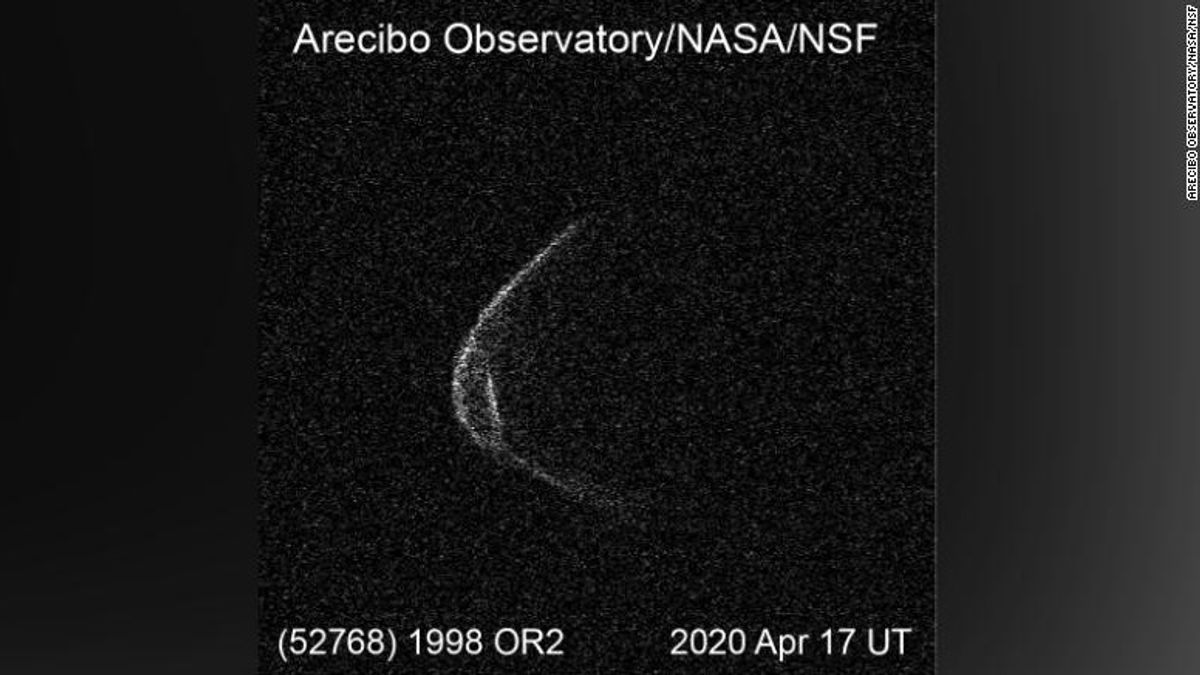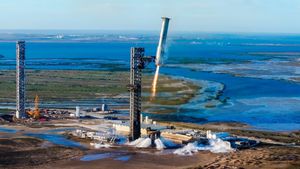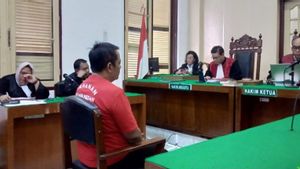JAKARTA - Natural phenomena will occur again in Ramadan 1441 Hijriah. This week, the Asteroid 1998 OR2 1.2 miles wide is rumored to be passing close to Earth. However, it is claimed that this will not harm our planet.
According to a report compiled from Space, on April 29, the asteroid will pass 3,908,791 miles from Earth, flying at a speed of 19,461 miles per hour. It is known, this distance is still 16 times farther than the distance between the earth and the moon.
An astronomer first discovered the Asteroid (52768) 1998 OR2 on July 24, 1998, at the Haleakala Observatory, Hawaii, United States (US). Currently, conditions on Earth are experiencing a pandemic of COVID-19. In observations captured recently by the Arecibo Observatory in Puerto Rico, the asteroid appears to be wearing a face mask, similar to a human.
If the asteroid hit Earth, according to NASA, when it saw the celestial body for the first time, it would find that the asteroid was large enough to destroy part of the planet.
#TeamRadar and the @NAIC observatory staff are taking the proper safety measures as we continue observations. This week we have been observing near-Earth asteroid 1998 OR2, which looks like it's wearing a mask! It's at least 1.5 km across and is passing 16 lunar distances away! pic.twitter.com/X2mQJCT2Qg
- Arecibo Radar (@AreciboRadar) April 18, 2020
"Small-scale topographical features such as the hills and mountains at one end of the 1998 OR2 Asteroid are of scientific interest. But because we all think about COVID-19, the appearance of this asteroid makes it look like the 1998 Asteroid OR2 recalls wearing a mask," said the planet's radar chief at Arecibo Observatory, Anne Virkki.
According to NASA's Center for Near-Earth Object Studies, the asteroid is expected to occur on Wednesday, April 29, at 5:56 a.m. local time. Experts track near-Earth objects, or NEOs, that can collide with Earth.
The Arecibo Observatory team of experts has been monitoring the near-Earth asteroid. For information, the Arecibo Observatory is a National Science Foundation facility managed by the University of Central Florida.
The observatory is supported by NASA's Near-Earth Object Observation Program and has been analyzing asteroids since the mid-90s. During the pandemic, scientists at Arecibo continued to make observations on behalf of planetary defense.
Along with social distancing, they limit the number of scientists and radar operators at the facility. They also wear masks during observation to prevent contracting COVID-19.
Scientists admit that the asteroid is confirmed to be a potentially dangerous object because it is larger than 500 feet and is within 5 million miles of Earth's orbit.
Scientists at Arecibo can monitor asteroids and use observations to determine their future paths to see if any asteroids are at risk to Earth.
"Radar measurements allow us to know more precisely where asteroids will be in the future, including future closure approaches to Earth. By 2079, the 1998 OR2 asteroid will pass about 3.5 times closer to Earth this year, so it is important to know. orbit precisely, "said a research scientist at the observatory, Flaviane Venditti.
Although the 1998 OR2 Asteroid is quite large, the celestial body is not the largest ever. That honor remains with Asteroid 3122 Florence (1981 ET3), which flew and collided with the earth on September 1, 2017.
From recorded rumors, the asteroid will pass Earth again on September 2, 2057. The asteroid is estimated to number between two and one, and has a width of five and a half miles.
But unfortunately, this 1998 OR2 Asteroid cannot be seen with the naked eye, it must require a telescope and other sophisticated tools that can record the asteroid's flight trail.
The English, Chinese, Japanese, Arabic, and French versions are automatically generated by the AI. So there may still be inaccuracies in translating, please always see Indonesian as our main language. (system supported by DigitalSiber.id)












